“Think of what is above, not of what is on earth. For you are died, and your life is hidden with Christ in God.”
(Colossians 3, 2-3)
1. The desert
The project of Bruno and his companions was to rediscover the spirituality of the desert: to leave everything to live for God alone in solitude. They wanted solitude as a means because it favours prayer, encounter alone with God, poverty of spirit, authenticity and humility. Even today, Carthusian hermits live in “deserts” similar to the first one, where they continue their life of prayer and work.
The solitude of the Carthusian is ensured and protected by three concentric circles: the desert, the enclosure and the cell. They are like progressive ramparts that lead to the “holy of holies” where the monk prays in secret: “When you pray, go into your room and shut the door and pray to your Father who is in secret; and your Father who sees in secret will reward you” (Mt 6:6).
Our monasteries are normally built in places far from any habitation and from the noise of traffic, in a natural setting. We call “desert” the fairly large territory surrounding the monastery and whose limits are determined. We do not leave this desert without special permission, except for the weekly walks, which remain however within the limits determined by the General Chapter for each house.


2. The enclosure
Each charterhouse is surrounded by a wall which makes the monastery an enclosure open to heaven in order to better commune with God. The monk’s entire life is spent within this perimeter and everything is arranged so that he does not need to go outside.
The way of life of the Carthusians is reflected in their habitat itself, in the buildings visible from the outside. For their solitary life tempered by a share of communal life, the first Carthusian monks grouped together near a spring and their huts resembled those of lumberjacks in their simplicity and solidity. These were the first models of what would become the cells of our Charterhouses. From the outset, these dwellings were rather separated from one another and yet linked by a covered gallery leading to the church (the only stone construction). They prefigured the typically Carthusian model of organisation of the monastic space. Every charterhouse is composed of three main parts:
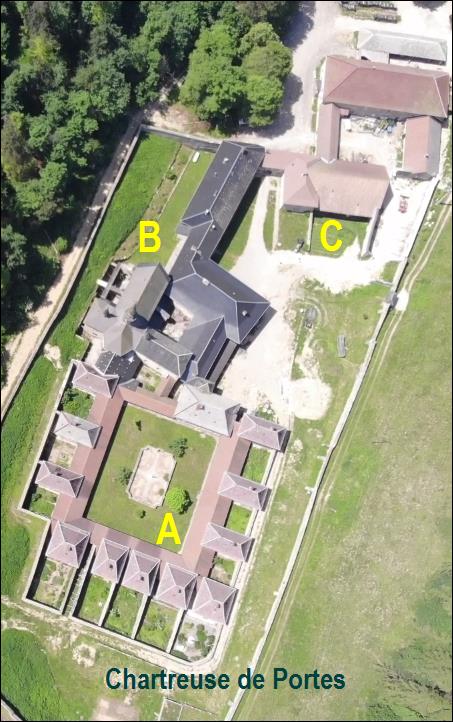
A. The great cloister
The great cloister groups together all the individual cells where the fathers (or the choir nuns) lead their solitary life. Sometimes there is a second cloister for the converse brothers (or the converse sisters) – for instance, in the charterhouses of San José (monks) and Trinità (Nuns).
B. The community places
There is a small cloister, around which are the places of community life: mainly the church, the chapterhouse and the refectory. In this part of the monastery there are also some workplaces: kitchen, pantry, sacristy, etc. Individual chapels are often located in this part of the monastery.
C. The workshops or “obediences”
The brothers’ workplaces are called “obediences”. The noisier workshops (carpentry, forge, farm, etc.) are located a little distant from the rest of the monastery so as not to disturb the silence. The brothers have the necessary equipment to carry out their work.
There are ‘big houses’ such as the Grande Chartreuse (with more than 30 cells, whose current construction dates from the 17th century) or the charterhouse of Parkminster (in England); and ‘small houses’ such as the charterhouses of Portes (in the Ain) and Montrieux (in Provence). The latter have kept the aspect of the primitive charterhouses with their 12 cells for the cloister monks distributed around the cemetery.
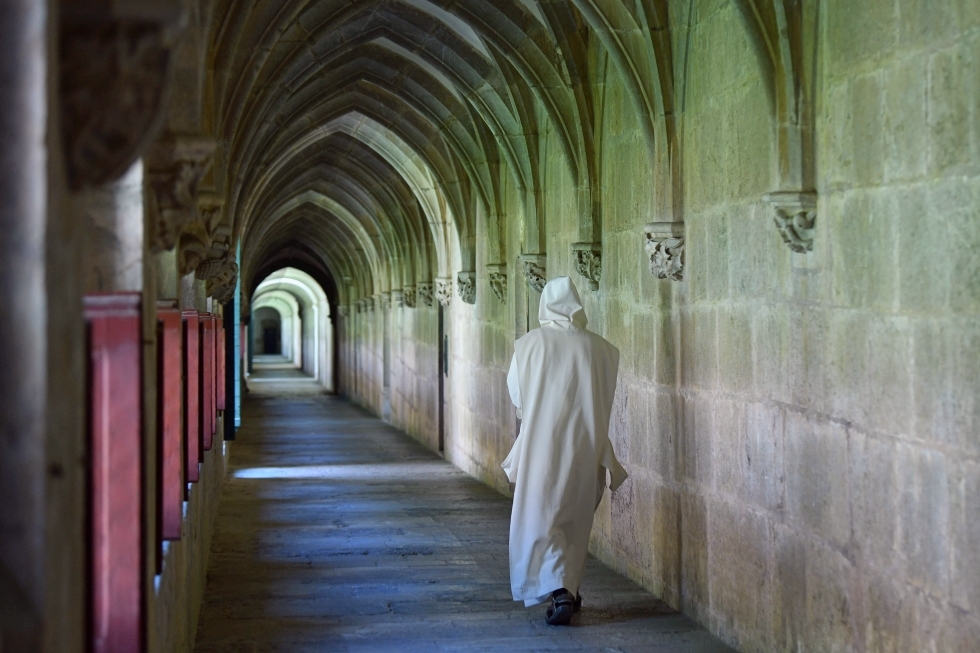
For a Carthusian monk, the cell is the place where his interior life is anchored. This is why he takes a vow of stability. “By profession, the monk is incorporated into the community, as the family which God gives him; he must settle in it permanently, in mind and body” (Statutes 30.1). For the Carthusian, this stability is the sign of his perfect oblation to God, for he has committed himself to persevere all his life in his vocation and in this precise place. Indeed, “contemplation is greatly furthered by patience and perseverance in the circumstances willed by God. It is not possible for a man to fix his attention on the same object if beforehand he has not perseveringly kept his body in a specific place” (Statutes 30.8).

3. The cell
The cell is a desert within the desert. It is the personal sanctuary where the monk lives his relationship with the Lord in a special way. Every cloister monk spends most of his life in a ‘cell’. But this word should not be misleading: the cell is actually a small hermitage or cottage, with a room, a workshop and a garden. In this hermitage, the absence of worldly noise invites to interiority and solitude, to listening to the Word of God. It is the usual setting for his daily activities: there he prays, works, eats and sleeps. He only leaves it for the common activities provided for by the rule: liturgical prayer in church, recreation and the weekly walk.
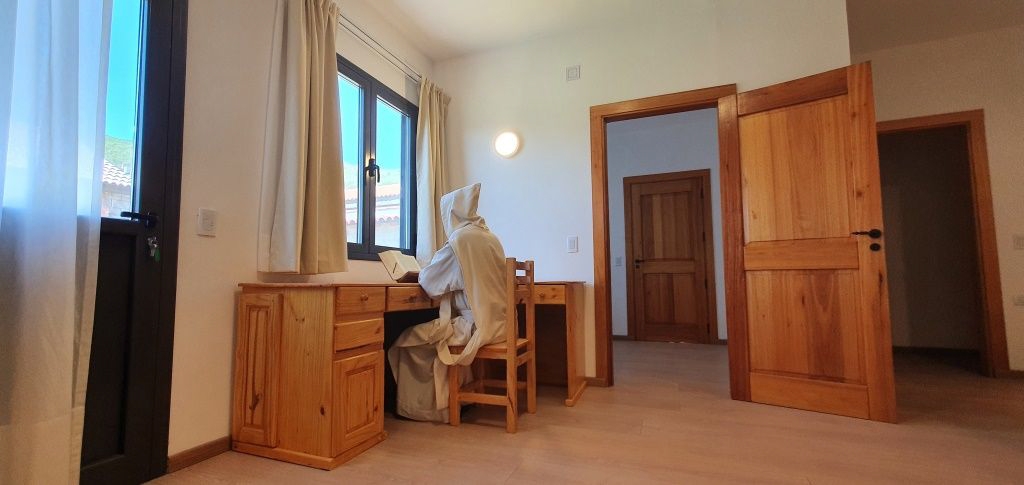
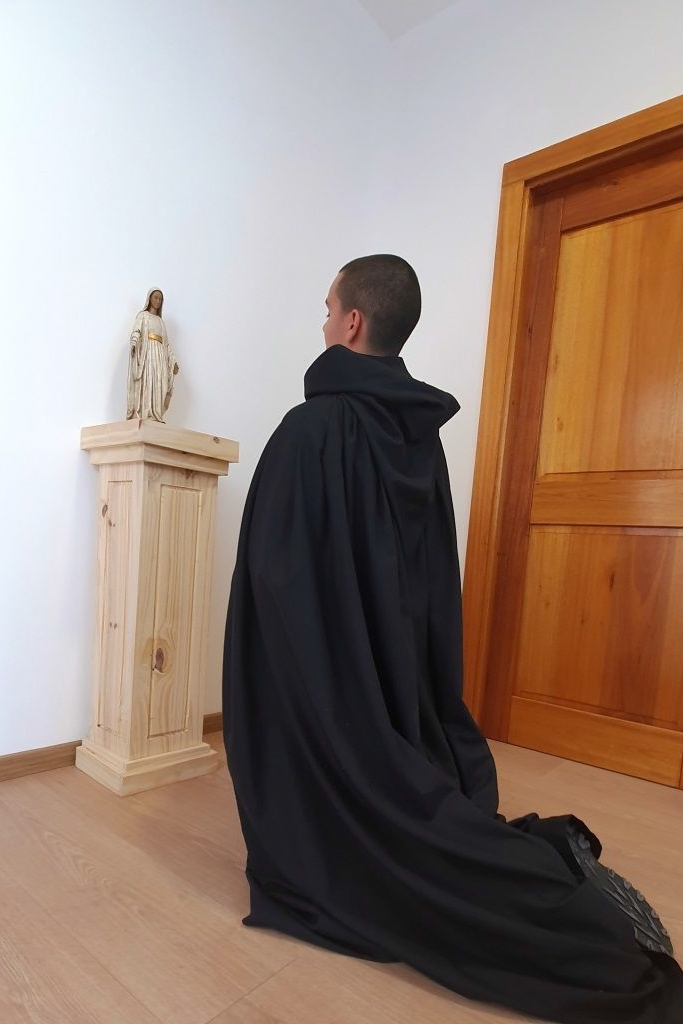
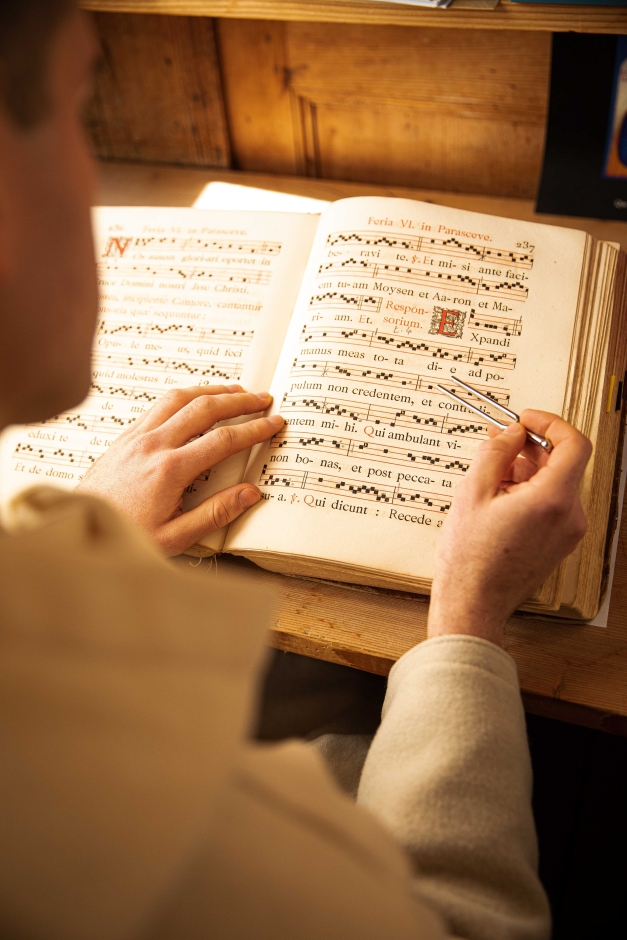

In his cell, the monk also finds his equilibrium thanks to the possibility of doing various manual works according to his abilities and interests. He can learn bookbinding, woodturning, elementary carpentry, etc. He must remain available for work useful to the common good that the superior may entrust to him.
The converse brothers also have a cell. It is often smaller and without garden and workshop as the brothers work outside their cell, in the whole monastery.
*
This triple protection of the desert, the enclosure and the cell, preserves the monk from the noises that dissipate the interior life. It allows him to reach interior silence in the depths of his heart, where God discreetly awaits him. But reaching interior silence is not a one-day work. The Carthusian fights against his thoughts, his desires, his evil inclinations, the search for efficiency and everything that distracts him from the essential. The living environment is designed to favour the ‘gift of tears’ which purifies the soul, as does the continual conversion. In his cell, the monk must avoid all superfluous things and needless burdens in order to reach interior simplicity and detachment. Alone with God, he must put aside everything that prevents him from being entirely present to God. His vocation is union with God.

